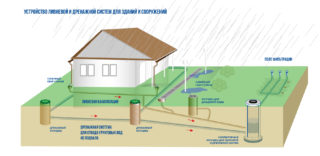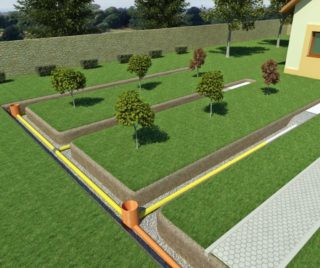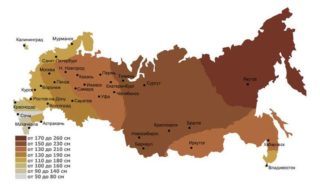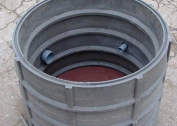Drainage structures drain sediments and groundwater from buildings and the surrounding area, preventing the destruction of foundations, flooding and dampening of basements, waterlogging and erosion of the soil. Well-designed design of the drainage system of the site guarantees the effective functioning of the drainage system.
Tasks for designing drainage structures
The arrangement of drainage is a laborious and financially costly process. A detailed project helps to avoid mistakes and solves the following tasks:
- determination of the correct locations and depths of trenches for laying pipelines;
- exact calculation of installation sites of viewing and absorption wells;
- accounting in the project of buildings planned on the site;
- accurate calculation of the amount of materials, labor costs and a full estimate of work, which eliminates additional financial and time costs;
- simple repair of the structure during operation, thanks to well-written documentation.
The design of the drainage system is necessary, since a full technical calculation ensures trouble-free operation of the structure in the future.
Design rules
The plan of the drainage system is developed, taking into account the requirements of SNiP 2.06.15-85. Begin work on a project by collecting information. Prepare and study the necessary materials:
- soil composition and characteristics;
- climatic and hydrogeological indicators of the area - the intensity of precipitation, the depth of groundwater, the proximity of water bodies;
- layout plan of buildings - houses, garages, baths, as well as paths and paved areas;
- a diagram of the depth of laying the foundations and the location of communications;
- map of the land plot and tree planting.
Based on the data obtained, a drainage option is selected and a project for the site drainage system is drawn up. They calculate the places and depths of the laying of elements - pipes, wells and corner joints.
Develop a project based on the rules for the design of drainage:
- The slope of the pipes to the catchment is taken uniform in length - for clay soils from 0.003; for sand from 0.002.
- Revision wells are provided at the corners of the building and at the places where the drains turn, not further than 2 m from each other. Wells are needed to clean the channels.
- They introduce elements from the moisture-proof and frost-resistant material into the project.
- When the site is flooded with heavy rainfall or groundwater, the general drainage of the territory is designed.
Compliance with standards eliminates design errors and unforeseen financial costs.
Site drainage system design structure
The project consists of research, calculations and detailed development with drawings of structural elements. The finished project of the drainage system of the site contains:
- overview of the topography of the territory - designation of irregularities and lowlands;
- hydraulic engineering calculations;
- drawings of the exact installation of drainage channels, water collectors and inspection wells in the territory with markings relative to the constructed and planned facilities;
- design characteristics of the arrangement elements - the depth of the trenches, filtering fill, the diameter of the pipelines;
- marking of pipe joints, indicating fittings and additional parts;
- determination of technical characteristics of materials used in the construction;
- budgeting.
The depth of pipe laying depends on the depth of soil freezing in the region, but sometimes cable heating is used for the full operation of spillways in the off-season.
Drawing up a plan and diagram of the elements of the drainage complex
 The drainage plan is based on standard schemes. The choice of option depends on the characteristics of the site and the objectives of the drainage. There are open and closed designs.
The drainage plan is based on standard schemes. The choice of option depends on the characteristics of the site and the objectives of the drainage. There are open and closed designs.
The open type is designed to drain water from the soil surface and is divided into layouts:
- The point is the installation of storm water inlets in places of accumulation of water - in the lowlands, at the points of discharge of gutters from the roofs. Water inlets are connected to a central water conduit, which removes excess fluid from the site.
- Linear consists of surface elements - channels, gutters, sand traps, which are laid in ditches with a slope towards the catchment, fixed with a concrete screed and covered with grates.
Closed discharge installations are used for groundwater discharge. Such a complex consists of pipelines buried under the ground. Distinguish between general and local options for closed drainage, which are used to drain the site and individual objects, respectively. The methods of installing the outlet pipes are divided into horizontal, vertical and combined.
A local version is designed to protect foundations and basements from underflooding with groundwater, dampness and mold. Types of Drainage:
- Wall is laid at the construction stage of the house, if the basement is planned. Pipes are installed close to the foundation.
- The ring is used if the house and the blind area are already built. Drains are placed at a certain distance (but not further than 3 m) from the base.
- The layered arrangement is evenly distributed under the foundation plates.
The final plan is not always the standard option. Combinations of different types of drainage are more effective for some sites.





